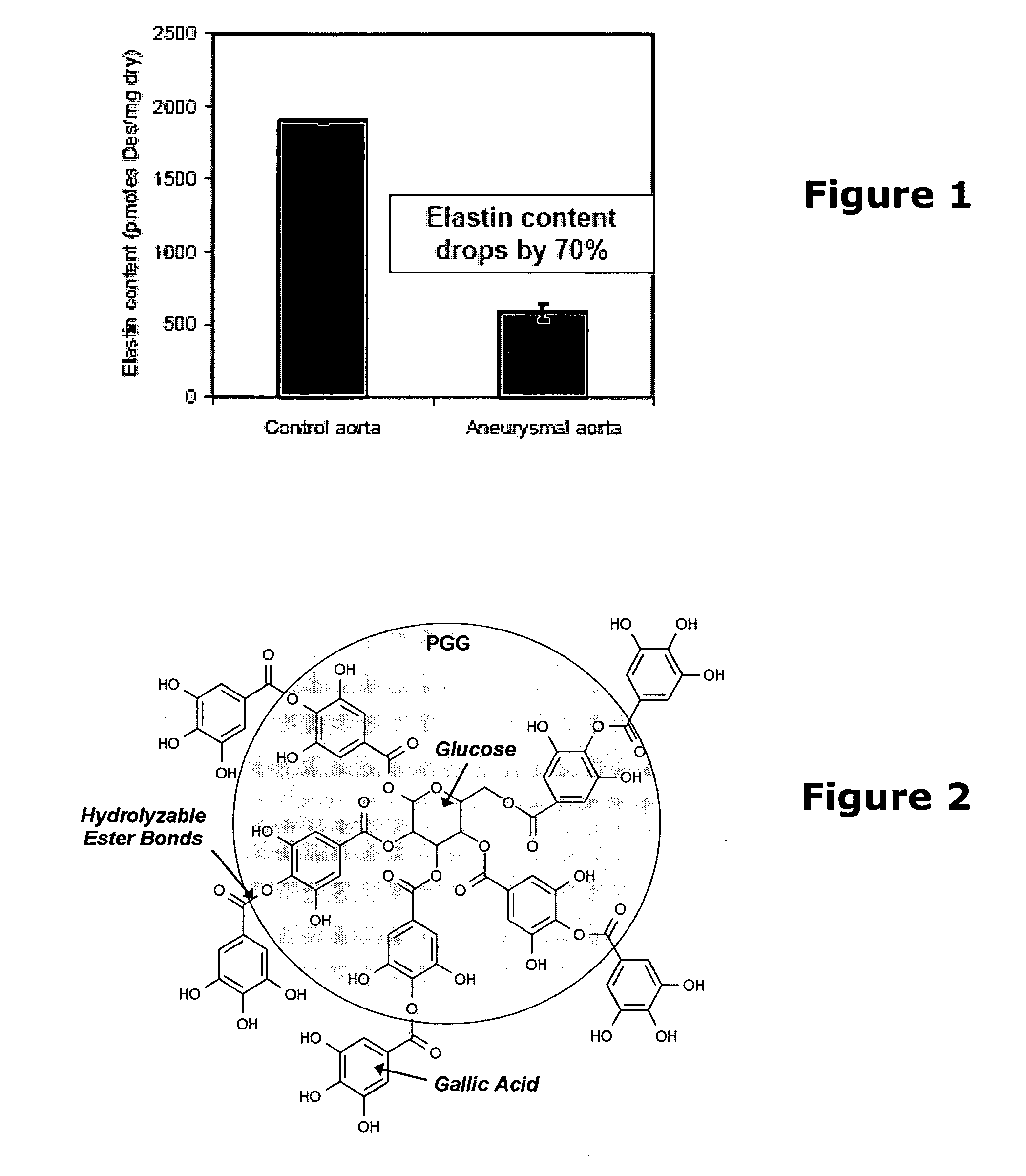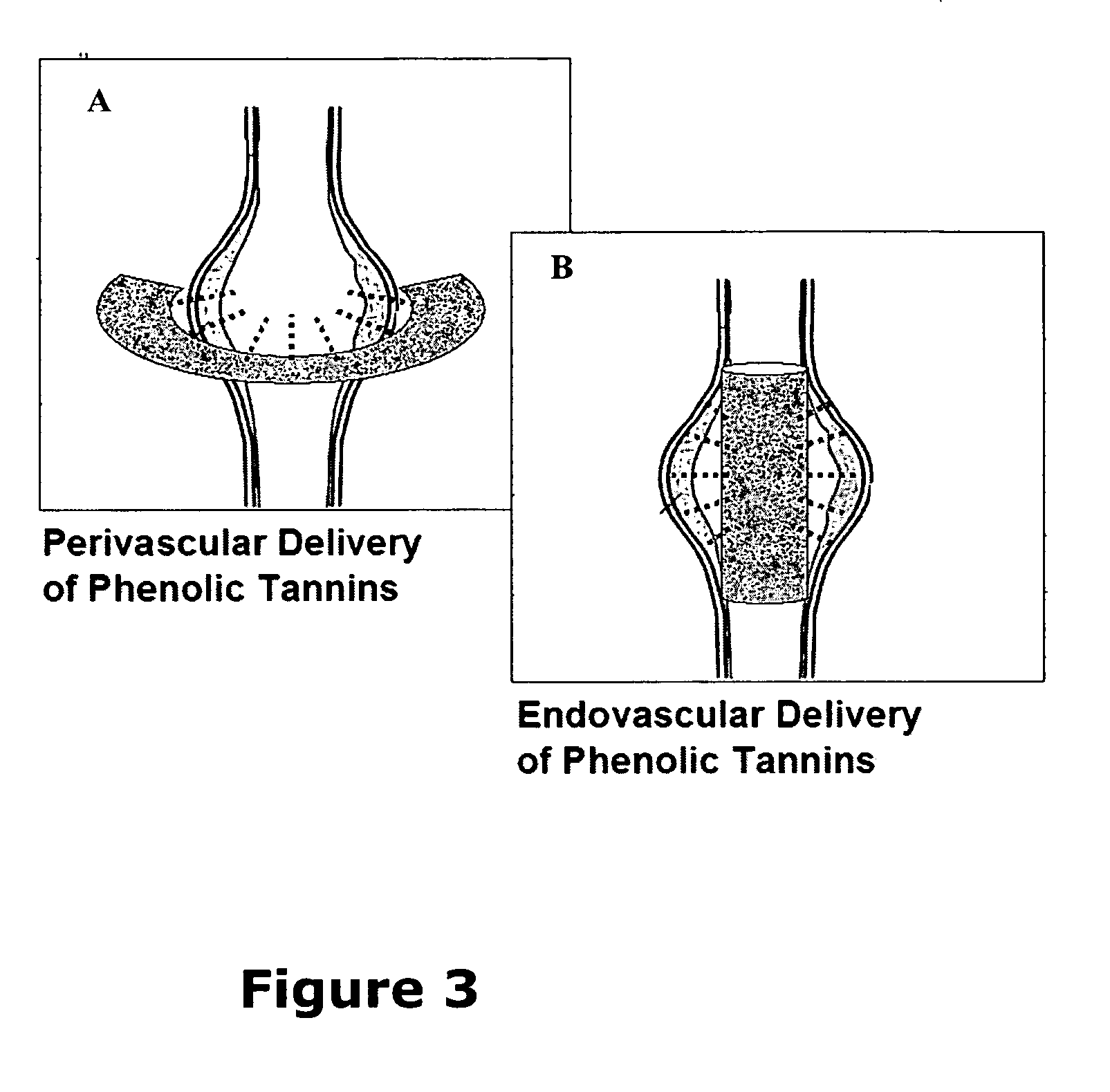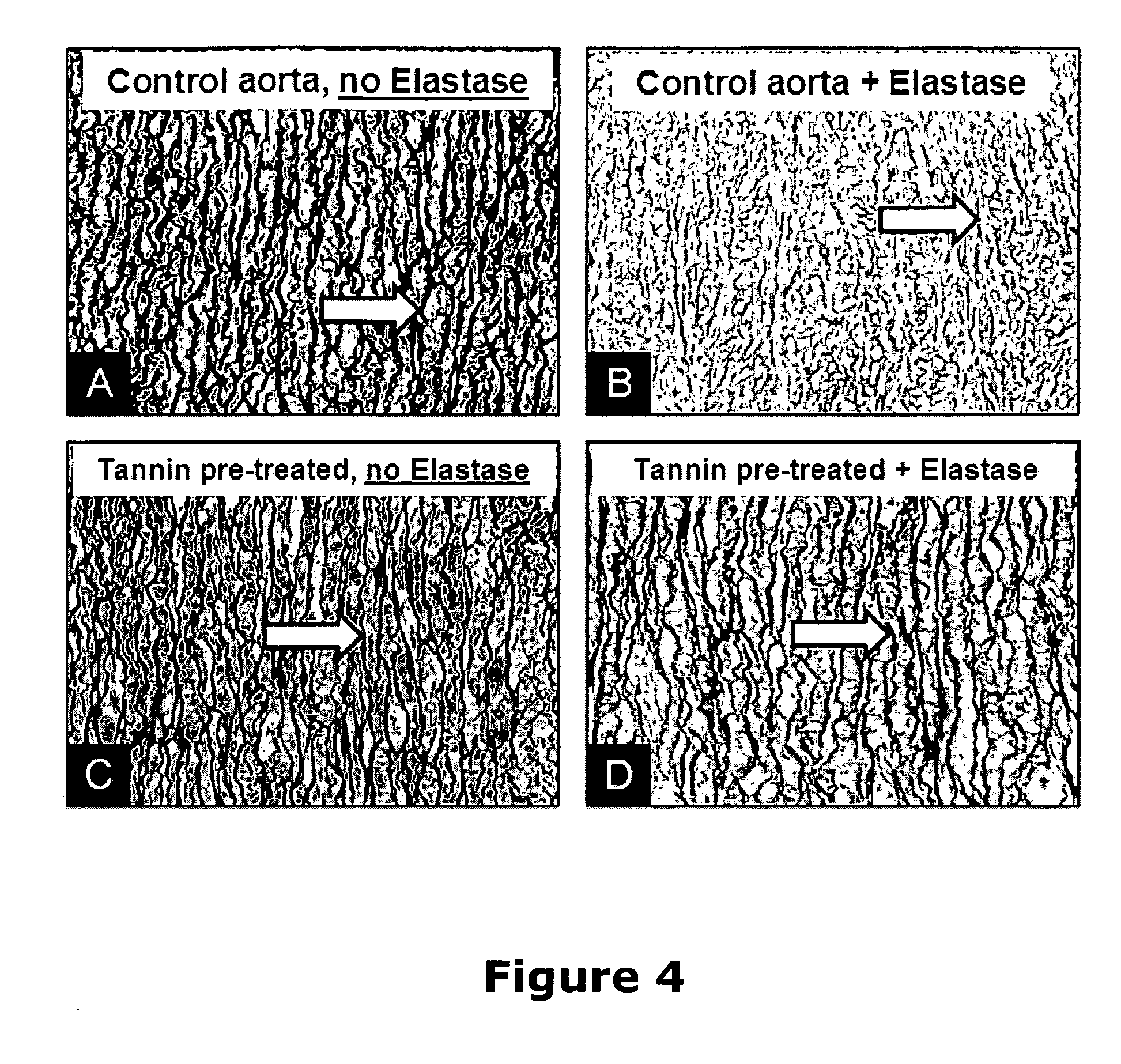Elastin stabilization of connective tissue
a technology of connective tissue and elastin, which is applied in the direction of prosthesis, extracellular fluid disorder, drug composition, etc., can solve the problems of limited current surgical treatment options, limited treatment options, and risks for patients beyond the surgery itsel
- Summary
- Abstract
- Description
- Claims
- Application Information
AI Technical Summary
Benefits of technology
Problems solved by technology
Method used
Image
Examples
example 1
[0072] Fresh porcine aorta was cut into approximately 4 mm×4 mm squares and treated with 0.3% tannic acid (TA) (1.76 mM) in 50 mM HEPES (Na2HPO4) buffered saline at pH 5.5 for 4 days at room temperature. A control sample was treated in mM Hepes buffered saline at pH5.5. Samples were then rinsed three times (1 hour each) in 100 mL ddH2O at room temperature and lyophilized to record dry weight. Samples (about 15-25 mg dry weight), both control and TA treated, were incubated with 1.0 mL pure elastase (20 units / ml, in 100 mM Tris, 1 mM CaCl2, 0.02% NaN3, pH 7.8 buffer) at 37° C. for 48 hours with orbital shaking at 650 rpm. Samples were then centrifuged (10000 rpm, 10 min. 4° C.) and supernatants retained to assess enzyme activity. Tissue samples were again rinsed three times (1 hour each) in 100 mL ddH2O at room temperature and lyophilized to record dry weight after elastase, and the percent of digested tissue was calculated. Elastin degradation was assessed by measuring mass loss (dry...
example 2
[0074] Fresh porcine aorta was cut across the diameter into continuous rings approximately 1 cm in height as illustrated in FIG. 5A and treated with glutaraldehyde (Glut treatment). For this treatment, aortic ring samples were first fixed with 0.6% glutaraldehyde in 50 mM Hepes buffered saline, pH 7.4, overnight at room temperatures, followed by 0.2% glutaraldehyde in the same buffer for 7 days at room temperatures.
[0075] A portion of the Glut-treated rings were then treated with 0.3% pentagalloylglucose (PGG). PGG was first prepared from TA as outlined by Hagerman, et al. (Hagerman A. E., Zhao Y., and Johanson J., “Methods for determination of condensed and hydrolyzable tannins,” Shahadi, F., Ed., Antinutrients and Phytochemicals in Foods, Washington, D.C., American Chemical Society, p. 209-222 (1997)). Specifically, TA was methanolyzed using a solution of methanol and acetate buffer. After methanolysis, the methanol was removed by rotary evaporation and replaced with ddH2O. A ser...
example 3
[0080] Fresh porcine aorta was treated with Glut, Glut / TA, or Glut / PGG, as described above. After thorough rinsing (3×, 1 hr. each, 100 mL ddH2O), samples were orbitally shaken at 120 rpm 37° C. for 14 days in a PBS / azide buffer, pH7.4, for extraction of soluble, cytotoxic compounds (50 mL per 6 tissues samples, each 4 mm×4 mm).
[0081] Rat skin fibroblasts were seeded onto 24-well plates (50,000 cells / well) in 1 mL DMEM supplemented with 10% FBS and 1% penicillin-streptomycin. Cells were maintained in a humidified incubator at 37° C. with 10% CO2. After 24 hours, the media was removed and replaced with one of the PBS / azide solutions diluted 10-fold in fresh media. As control, a sample was held in buffer alone (negative control) and also in a 70% ethanol solution (positive control). Effectively, 100 μL of the ‘test solution’ was added to 900 μL of media for each well (except in the case of ethanol, in which no media was added). The cells were incubated with these solutions for 2 hour...
PUM
| Property | Measurement | Unit |
|---|---|---|
| diameter | aaaaa | aaaaa |
| length | aaaaa | aaaaa |
| pH | aaaaa | aaaaa |
Abstract
Description
Claims
Application Information
 Login to View More
Login to View More - R&D
- Intellectual Property
- Life Sciences
- Materials
- Tech Scout
- Unparalleled Data Quality
- Higher Quality Content
- 60% Fewer Hallucinations
Browse by: Latest US Patents, China's latest patents, Technical Efficacy Thesaurus, Application Domain, Technology Topic, Popular Technical Reports.
© 2025 PatSnap. All rights reserved.Legal|Privacy policy|Modern Slavery Act Transparency Statement|Sitemap|About US| Contact US: help@patsnap.com



